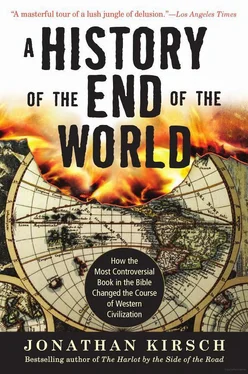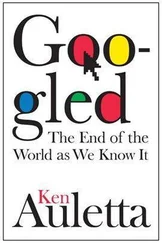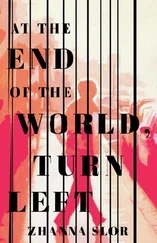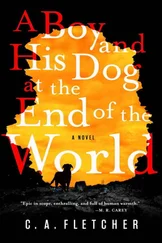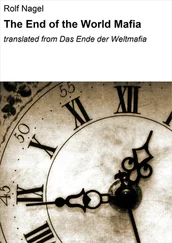Any politician who embraces the apocalyptic idea, whether openly or secretly, is treading on the same trap door that has opened under the feet of presidents like George Bush, both father and son. “Millennarian movements cannot help but fall into conspiracy thinking, for they rigorously divide the world into the good and evil, the saved and the damned,” explains political scientist Michael Barkun. “Evil constitutes an ever-present threat. Only the final consummation of history will remove it.” 128But the question of whether one is good or evil, saved or damned, is wholly in the eye of the beholder, as both of the Bushes have discovered.
Today, some twenty centuries after the book of Revelation first appeared in our tormented world, the words of Jerome are even more appropriate than when he first uttered them in the fourth century: “Revelation has as many mysteries as it has words.” 129To which we might add: and as many dangers, too.
To be sure, some readers understand the book of Revelation as a stirring manifesto of freedom and a call to self-liberation in the here and now. “Martin Luther King Jr.’s Letter from a Birmingham Jail, for instance, reflects experiences and hopes similar to the theology of Revelation,” insists Catholic scholar Elizabeth Schüssler Fiorenza, a feminist theologian who sees “a glimpse of the new Jerusalem” in the resonant phrase of King’s 1963 sermon at the Lincoln Memorial, “I have a dream.” 130And poet and radical priest Daniel Berrigan, after being arrested for digging a grave on the White House lawn as an act of political protest, was inspired to write a commentary of his own on Revelation in a jail cell in Washington, D.C. Father Berrigan, too, urges us to regard Revelation as a liberating rather than a fearful and hateful text.
“The book of Revelation ought to be burned, it is positively subversive!” he exults in Nightmare of God, striking a note of sarcasm. “The corporate state wastes the earth, dislocates minds, corrupts all areas of science, in its expanding military and economic adventurism—behold the Rome of Revelation. Behold also America!” 131
Other readers elevate the book of Revelation to a still loftier and more ethereal plane. Theologian Jacques Ellul, for example, has been credited with a wholly redemptive reading of Revelation that purges the text of all its terror: “Rather than announcing the catastrophic end of history as our fate,” explains Darrell J. Fasching, a religious scholar who specializes in the study of religion and violence, “the Apocalypse is, he argues, the revelation of God’s freedom at work in history as mediated by radical human hope.” When contrasted with such refined and elegant readings of Revelation, the crass apocalyptic speculation on display in Hal Lindsey’s writings, according to Fasching, “is nothing short of obscene.” 132
“[Hal Lindsey] engages in a form of scriptural exegesis that Augustine once appropriately condemned as fantastica fornicatio, ” writes Fasching in The Ethical Challenge of Auschwitz and Hirsoshima, “which might be politely translated ‘mental masturbation,’ or less politely as ‘fucking the sacred symbols.’” 133
What’s at stake in the reading of Revelation, however, is far more than a matter of mental masturbation. The intentionally provocative text, as we have seen, is capable of moving some men and women to madness, some to acts of violence, and some to both at once. Perhaps it was meant to do so. “It is hard to know whether gloomy speculations with the apocalypse represent real fear of its occurrence or a kind of perverse fascination with it,” observes Michael Barkun in Disaster and the Millennium. “It may, on the other hand, serve in some subtle fashion as a self-fulfilling prophecy which drags in train the very dreaded events themselves.” 134No better explanation has been offered for the malign influence of Revelation on a man like David Koresh and the little apocalypse that took place in Waco.
That’s why some readers recoil in horror at the scenes of carnage that leave Revelation with such a bitter and even toxic aftertaste. “[T]here is no other document in either the Old or New Testament so inhuman, so spiritually irresponsible,” writes Jewish biblical scholar and translator Robert Alter, a discerning critic who has extracted new and illuminating insights from the ancient text. “There is no room for real people in apocalypses, for when a writer chooses to see men as huddled masses waiting to be thrown into sulphurous pits, he hardly needs to look at individual faces….” 135And the very phrase that Alter chooses to describe what he sees in the book of Revelation—“huddled masses waiting to be thrown into pits”—is surely meant to remind us of Babi Yar and the other killing fields of the Holocaust.
The linkage between Revelation and the Holocaust, in fact, has been noticed by more than one modern reader. The apocalyptic idea, stripped of its biblical trappings and expressed in a wholly new vocabulary, was embraced by both fascists and Marxists in the mid–twentieth century. Hitler and Stalin, for example, were both true believers who convinced themselves that they were ordained to create a paradise on earth by ruthlessly destroying the old order and building a new one in its place. And so, as unsettling as it may be to pious Jews and Christians, some revisionists draw a line that runs from the very first apocalyptic true believers in the Judeo-Christian tradition—the readers and hearers of Daniel and Revelation—to the mass murderers who targeted the Jewish people during the Holocaust.
“It is a grotesque irony that Nazism should have unconsciously adopted a structure of belief partly developed, though not necessarily invented, by Jews,” argues Damian Thompson. “There can be little doubt that the thousand-year reign of the saints lies behind the vision of a thousand-year Reich; but a far more important influence on the Nazis was Revelation’s portrayal of the Antichrist—an enemy so resilient that he can be defeated only in a cosmic war.” 136
The apocalyptic idea, in fact, has been blamed for both of the horrors that have come to symbolize the human potential for catastrophic violence in the modern world—the murder of 6 million Jewish men, women, and children during the Holocaust, and the deaths of several hundred thousand Japanese men, women, and children when one atomic bomb was dropped on Hiroshima and a second bomb was dropped on Nagasaki in what turned out to be the last days of World War II. The victims were wholly innocent of any wrongdoing. Yet once we come to regard any adversary as a satanic beast rather than a fellow human being—as Revelation plainly teaches us to do—then killing can be seen as a justifiable and even a sanctified act of vengeance.
The apocalyptic idea and its dangerous baggage are not confined to the Judeo-Christian tradition. “The Hour is coming,” goes one verse of the Koran, which describes a stalking beast and various “cosmic cataclysms”—“the rolling up of the sun, the darkening of the stars and the movement of the mountains, the splitting of the sky, and the inundation of the seas”—as signs of the day of resurrection “when the tombs are overthrown.” The Koranic version of the end-times, according to Saïd Amir Arjomand, a scholar specializing in the history and sociology of Islam, may have been specifically inspired by the vision of the sixth seal in the book of Revelation. 137
Whether it originates in Islam, Christianity, or Judaism, however, the apocalyptic imagination has always moved some men and women to act out their revenge fantasies by taking the lives of their fellow human beings. Osama bin Laden alerted the world to his own homicidal intentions when he recited a traditional saying attributed to Muhammad during an interview that took place two years before horrors of 9/11: “Judgment day shall not come,” goes the hadith that bin Laden quoted, “until the Muslims fight the Jews, where the Jews will hide behind the trees and stones, and the tree and the stone will speak and say, ‘Muslim, behind me is a Jew. Come and kill him.’” 138
Читать дальше
